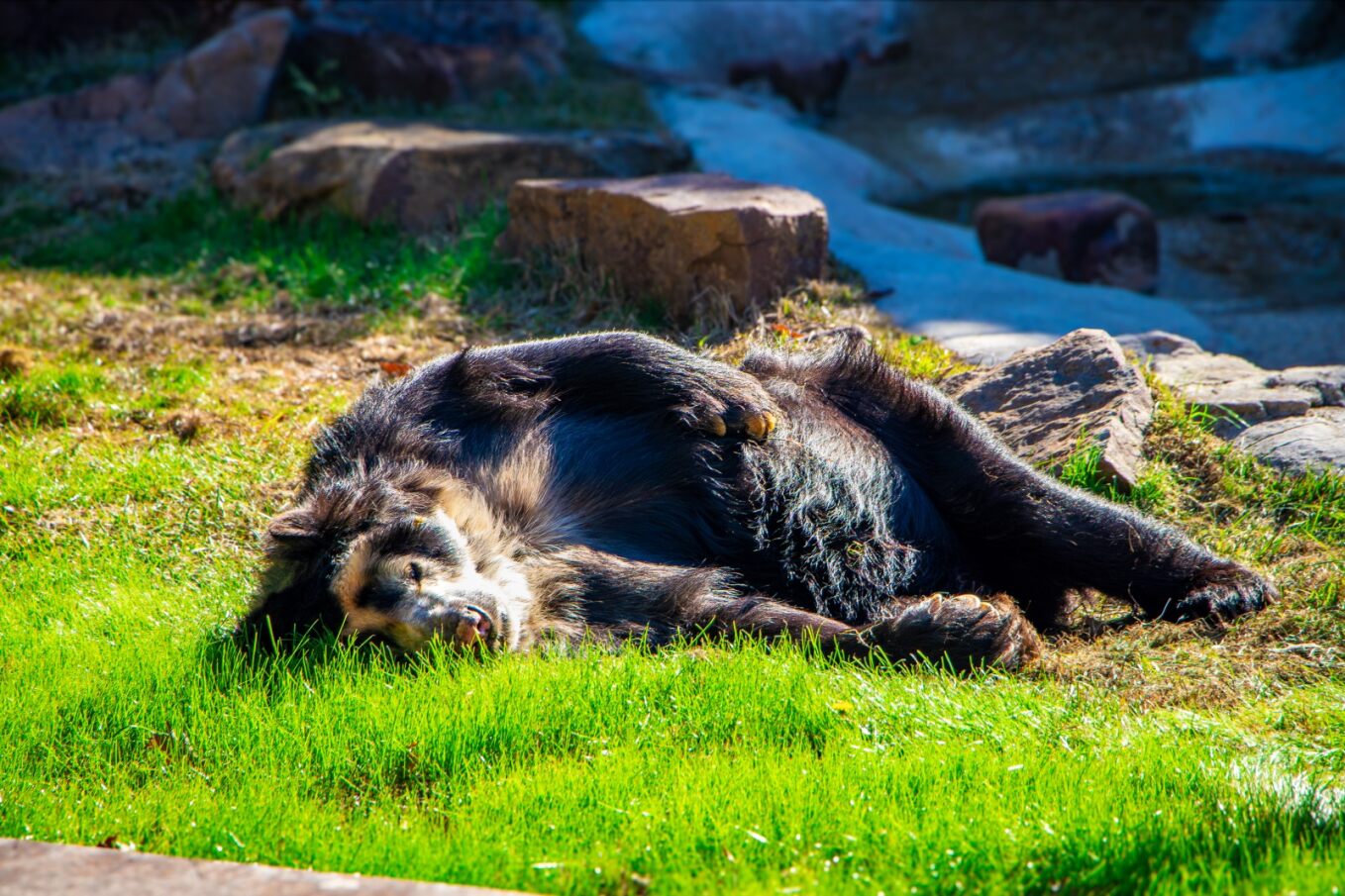– Introduction to the Andean bear (Oso) and their unique fur markings that resemble spectacles.
– The Andean bear’s ecological significance as an ecosystem conservation umbrella species.
– Threats to Andean bear populations and their conservation status on the IUCN Red List.
– Conservation initiatives and the role of zoos in protecting the Andean bear and its habitat.
– The importance of research and habitat restoration for the future of Andean bears.
Deep in the cloud forests and high-altitude grasslands of the Andes Mountains roams an elusive and captivating creature: the Andean bear. Meet Oso, a representative of this fascinating species, also known as the spectacled bear, for the distinctive white or tan markings around their eyes, which resemble eyeglasses. These markings are as unique as fingerprints, with no two bears sporting the same pattern.
The Andean bear is South America’s only bear species, symbolizing the wild Andes. It plays a pivotal role in sustaining the health of its ecosystem. Renowned as an umbrella species, the conservation of Andean bears directly benefits many other species sharing their habitat. Their diet largely consists of various fruits, which they eat in large quantities, and in doing so, Andean bears disperse the seeds of these fruits far and wide through their droppings. The germination of over 300 plant species across vast tracts of land owes much to the humble habits of Oso and his kind, thus bolstering the phenomenal biodiversity of the Tropical Andes.
Regrettably, these outstanding bears are not immune to the consequences of human activity. They are classified as Vulnerable on the IUCN Red List of Threatened Species, with estimates suggesting that fewer than 10,000 remain in the wild. Their numbers have been declining due to various pressures, including habitat loss from agriculture and mining, poaching, and the effects of climate change that disrupt their environment.
A variety of conservation strategies have been implemented to counter these threats. Zoos play an instrumental role in these efforts by raising awareness, educating the public, and supporting in-situ projects focused on protecting Andean bears. Moreover, zoos allow visitors to encounter bears like Oso up close, igniting the empathy and curiosity necessary to inspire personal action for wildlife conservation.
Additionally, research is integral to ascertaining the number of Andean bears, understanding their habitat needs, and monitoring their health, forming the foundation for effective protection measures. Scientists work tirelessly to equip conservationists with vital information to formulate strategies to mitigate human activities’ impacts. Habitat restoration efforts, too, are fundamental. Efforts to replant native vegetation and create biological corridors have enabled bears to travel across larger areas safely, increasing their chances of survival.
The Andean bear’s narrative intertwines the fate of a single species with the health of an entire ecosystem. As symbolized by Oso, the Andean bear ignites a sense of wonder and serves as a powerful ambassador for the broader environmental concerns facing our world. The diligent work of researchers, conservationists, and wildlife enthusiasts contributes to the ongoing tale of this bear. By safeguarding the enigmatic spectacled bear, we steer the narrative towards a brighter future for Oso and his kin and the entire mosaic of life in the Andes.
*****
Source Description
Meet Oso, our Andean bear! These bears are also known as “spectacled bears” for the round, glasses-like fur markings found in many members of this species.
DYK: Andean bears are considered an “umbrella species,” meaning that conservation efforts for this species alone can benefit countless other species living in the same ecosystem! Andean bears disperse seeds from over 300 unique types of plants across a large area, making them a key determinant in the Tropical Andes ecosystem’s beautiful, rich biological diversity.
The IUCN Red List of Threatened Species classifies these magnificent animals as vulnerable. We’re proud to support conservation initiatives that conduct research and habitat restoration efforts for vulnerable species like this one.

